| July 03, 2012 | Volume 08 Issue 25 |
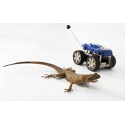 | Leaping lizards inspire robot designs
University of California, Berkeley, biologists and engineers studied how lizards manage to leap successfully even when they slip and stumble. They found that lizards swing their tails upward to prevent them from pitching head-over-heels into a rock. But after the team added a tail to a robotic car named Tailbot, they discovered that counteracting the effect of a slip is not as simple as throwing your tail in the air.
Read the full article. |
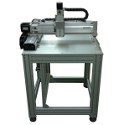 | Quick Look:
Multi-axes Cartesian robotic automation platform
IntelLiDrives' Cartesian Multi-Axes Robotic Automation Platforms are built with BSMA Series motorized ball screw linear actuators and are ideal for many automation applications, including pick and place, assembly, test and inspection, and dispensing stations. Standard configurations include left- or right-handed XY, XYZ, and XZ systems. Stages can be side or base mounted with elevation raisers and base platform. Working XY area is 400 x 400 mm. Z-axis stroke is 100 mm.
Click here to learn more. |
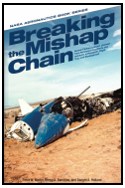 | Mike Likes:
No-cost NASA e-book details human factors in aerospace accidents
Wow, this will probably be my favorite Mike Likes of the year. No kidding. And now I see that it is one of yours. The latest offering in the NASA Aeronautics Book Series, "Breaking the Mishap Chain," by Peter Merlin, Gregg Bendrick, and Dwight Holland, is available gratis as an e-book. The 244-pager details lessons learned from aerospace accidents and incidents in research, flight test, and development. It includes a number of mishap case studies (X-31, X-15, XB-70, space shuttle, etc.) that focus on the human factors that are often associated with disastrous events. Available in EPUB, MOBI, and PDF formats. Like me, you may be thinking, "Is it my birthday already?!"
Go to the NASA description and download page. |
| | Videos+: Technologies and inspiration in action | Impressive: Sand Flea robot jumps 30 ft up
The Sand Flea is an unassuming, 11-lb rolling-platform robot with one exceptionally useful trick: Normally it drives like an RC car, but when it needs to it can jump 30 ft into the air. This creation from Big Dog robot maker Boston Dynamics features an onboard stabilization system that keeps it oriented during flight to improve the view from the video uplink and to control landings. Development of Sand Flea is funded by the US Army's Rapid Equipping Force. Gotta love the super-tough-plastic construction. It gets a workout.
View the video. |
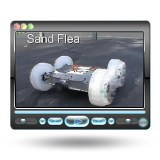 |
DARPA takes LS3 (BigDog) robot for a walk
DARPA is developing a semi-autonomous four-legged robot, the Legged Squad Support System (LS3) based on the BigDog system created by Boston Dynamics, to work in tandem with a squad of Marines or Soldiers. Recently, the LS3 prototype underwent its first outdoor exercise, demonstrating the ability to follow a person using its "eyes" – sensors that allow the robot to distinguish between trees, rocks, terrain obstacles, and people. Over the course of the next 18 months, DARPA plans to complete development of and refine key capabilities to ensure LS3 is able to support dismounted squads of warfighters. Features to be tested and validated include the ability to carry 400 lb on a 20-mile trek in 24 hr without being refueled. Also planned is the addition of "hearing" technology, enabling squad members to speak commands to LS3 such as "stop," "sit," or "come here." Hopefully it will be made quieter too.
View the video. |
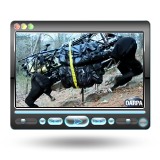 |
Flying wind turbine aces test flight
Altaeros Energies, a wind energy company formed out of MIT, took to the Maine skies in late March to test its helium-filled, 35-ft Altaeros Airborne Wind Turbine (AWT). The prototype climbed to 350 ft, produced power at altitude, and landed in an automated cycle, lifting the top-selling Southwest Skystream turbine to produce over twice the power at high altitude than generated at conventional tower height. The product aims to reduce energy costs by up to 65% by harnessing the stronger winds found over 1,000 ft high and reducing installation time from weeks to days. The lifting technology is adapted from aerostats, industrial cousins of passenger blimps that for decades have lifted heavy communications and radar equipment into the air for long periods of time. Aerostats are rated to survive hurricane-force winds.
View the video. |
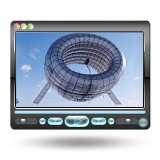 |
|
|